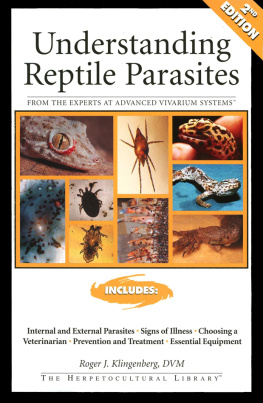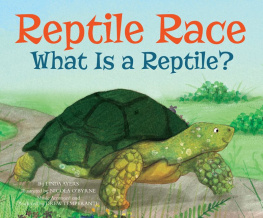Robert C. Thomson - California Amphibian and Reptile Species of Special Concern
Here you can read online Robert C. Thomson - California Amphibian and Reptile Species of Special Concern full text of the book (entire story) in english for free. Download pdf and epub, get meaning, cover and reviews about this ebook. publisher: University of California Press, genre: Romance novel. Description of the work, (preface) as well as reviews are available. Best literature library LitArk.com created for fans of good reading and offers a wide selection of genres:
Romance novel
Science fiction
Adventure
Detective
Science
History
Home and family
Prose
Art
Politics
Computer
Non-fiction
Religion
Business
Children
Humor
Choose a favorite category and find really read worthwhile books. Enjoy immersion in the world of imagination, feel the emotions of the characters or learn something new for yourself, make an fascinating discovery.
- Book:California Amphibian and Reptile Species of Special Concern
- Author:
- Publisher:University of California Press
- Genre:
- Rating:4 / 5
- Favourites:Add to favourites
- Your mark:
- 80
- 1
- 2
- 3
- 4
- 5
California Amphibian and Reptile Species of Special Concern: summary, description and annotation
We offer to read an annotation, description, summary or preface (depends on what the author of the book "California Amphibian and Reptile Species of Special Concern" wrote himself). If you haven't found the necessary information about the book — write in the comments, we will try to find it.
California Amphibian and Reptile Species of Special Concern — read online for free the complete book (whole text) full work
Below is the text of the book, divided by pages. System saving the place of the last page read, allows you to conveniently read the book "California Amphibian and Reptile Species of Special Concern" online for free, without having to search again every time where you left off. Put a bookmark, and you can go to the page where you finished reading at any time.
Font size:
Interval:
Bookmark:

Robert C. Thomson, Amber N. Wright, and H. Bradley Shaffer
Betsy Bolster, Project Manager
Kristi Cripe, Cartographer and GIS Specialist
Sean J. Barry, Robert N. Fisher, Hartwell H. Welsh Jr., Technical Advisory Committee
CALIFORNIA DEPARTMENT OF FISH AND WILDLIFE

UNIVERSITY OF CALIFORNIA PRESS
University of California Press, one of the most distinguished university presses in the United States, enriches lives around the world by advancing scholarship in the humanities, social sciences, and natural sciences. Its activities are supported by the UC Press Foundation and by philanthropic contributions from individuals and institutions. For more information, visit www.ucpress.edu.
University of California Press
Oakland, California
2016 by The Regents of the University of California
Copublished with the California Department of Fish and Wildlife
Library of Congress Cataloging-in-Publication Data
Names: Thomson, Robert C., 1982 author. | Wright, Amber N., 1978 author. | Shaffer, H. Bradley (Howard Bradley), 1953 author.
Title: California amphibian and reptile species of special concern / Robert C. Thomson, Amber N. Wright, H. Bradley Shaffer.
Description: Oakland, California : University of California Press, [2016] | 2016 | Includes bibliographical references and index.
Identifiers: LCCN 2015048152 (print) | LCCN 2015050096 (ebook) | ISBN 9780520290907 (pbk. : alk. paper) | ISBN 9780520964839 (epub)
Subjects: LCSH : Rare amphibiansCalifornia. | Rare reptilesCalifornia.
Classification: LCC QL 644.73. U 5 T 46 2016 (print) | LCC QL 644.73. U 5 (ebook)
Manufactured in China
25 24 23 22 21 20 19 18 17 16
10 9 8 7 6 5 4 3 2 1
The paper used in this publication meets the minimum requirements of ANSI/NISO Z 39.48-1992 ( R 2002) ( Permanence of Paper ).
Ascaphus truei Stejneger 1899
Bufo alvarius Girard 1859
Bufo californicus Camp 1915
Bufo canorus Camp 1916a
Rana aurora Baird and Girard 1852
Rana boylii Baird 1854
Rana cascadae Slater 1939
Rana draytonii Baird and Girard 1852
Rana pipiens Schreber 1782
Rana pretiosa Baird and Girard 1853b
Rana yavapaiensis Platz and Frost 1984
Scaphiopus couchii Baird 1854
Spea hammondii (Baird 1859)
Ambystoma macrodactylum sigillatum Ferguson 1961
Aneides flavipunctatus niger Myers and Maslin 1948
Batrachoseps campi Marlow, Brode, and Wake 1979
Batrachoseps minor Jockusch, Yanev and Wake 2001
Batrachoseps relictus Brame and Murray 1968
Dicamptodon ensatus (Eschscholtz 1833)
Rhyacotriton variegatus Stebbins and Lowe 1951
Taricha rivularis (Twitty 1935)
Taricha torosa (Rathke 1833)
Anniella pulchra Gray 1852
Aspidoscelis tigris stejnegeri (Van Denburgh 1894)
Coleonyx variegatus abbotti Klauber 1945
Elgaria panamintina (Stebbins 1958)
Gambelia copeii (Yarrow 1882)
Heloderma suspectum Cope 1869
Phrynosoma blainvillii Gray 1839
Phrynosoma mcallii (Hallowell 1852)
Uma notata Baird 1858
Uma scoparia Cope 1894
Xantusia gracilis Grismer and Galvan 1986
Xantusia vigilis sierrae Bezy 1967
Arizona elegans occidentalis Blanchard 1924
Crotalus ruber Cope 1892
Diadophis punctatus regalis Baird and Girard 1853a
Masticophis flagellum ruddocki Brattstrom and Warren 1953
Masticophis fuliginosus (Cope 1895a)
Salvadora hexalepis virgultea Bogert 1935
Thamnophis hammondii (Kennicott 1860)
Thamnophis sirtalis (Linnaeus 1758)
Emys [=Actinemys] marmorata Baird and Girard 1852
Kinosternon sonoriense Le Conte 1854
California boasts one of the most biologically diverse faunas in the United States, as well as one of the most threatened. One of the key elements of the states efforts to protect its vertebrate fauna is through its Species of Special Concern program. The current volume, California Amphibian and Reptile Species of Special Concern , is an essential foundation upon which both biologists and state and federal agencies can manage the biological resources of the state. California has exceedingly sensitive species and ecosystems, many of which are at risk of extirpation or extinction as the states environment changes at rates greater than at any time in history.
This book builds upon the shoulders of its predecessor from two decades ago (Jennings and Hayes 1994a), but it is not just a simple update. Jennings and Hayes surveyed an enormous number of experts to create a comprehensive publication on Californias special concern amphibians and reptiles, and their volume was a key management tool for a generation of biologists. However, this new book goes several steps further, making it a necessary reference for wildlife and land managers, biologists, and nature lovers interested in amphibians and reptiles.
First, the maps generated for this book are stunning. They are literally beautiful enough to be framed, and detailed enough to guide resource managers. Second, there are color images of every taxon, generally taken in the field and highlighting the key features of each species. Third, the authors rely on the published literature to the maximum extent possible, pulling in the gray literature only when it is needed (which is often because many of these species are poorly known). But perhaps most importantly, the authors used multifactorial risk metrics that bring several measures of potential and actual threat into a single numeric score that captures the sensitivity of the species. The result is a tool that provides an important first pass at the difficult task of identifying those taxa that should be candidate Special Concern species.
Of course, there will always be important biological considerations that may argue against a strict interpretation of the metric scores, as the authors fully realize. For example, there are species on the Special Concern list that are so narrowly precinctive that the narrowness of their geographic range alone signals reason to be extra cautious about the species. The sandstone night lizard is one such taxon; its geographic range is much smaller than listed species such as black toad ( Bufo exsul) , and we know much less about the night lizard than we do about black toads. Regardless of the risk model score, this is a scary situation, and the narrowness of geographic range alone signals reason to be extremely cautious. Herpetologists are well aware of extinctions of entire species that were so narrowly precinctive that very subtle (sometimes unknown) environmental changes have caused those extinctions (e.g., the golden toad of Costa Rica, which had a geographic range the same size as that of the sandstone night lizard).
There are other species covered in this volume that will be challenging to manage for their protection in California. For example, the Gila monster ( Heloderma suspectum ) can be found in the extreme eastern part of the Mojave Desert in California (east of 116 longitude), where it has been recorded fewer than 30 times in the last 150 years. Within the distribution of Gila monsters in California, the pattern of rainfall includes winter rains and summer (monsoonal) rains; this biphasic pattern is typical in Utah, Nevada, and Arizona where Gila monsters are relatively more common. Throughout their geographic range, Gila monsters depend upon climate conditions conducive for reproduction by small mammals because neonatal small mammals are the principal prey for this species. However, climate is demonstrably changing in California to be warmer (especially in summers) and with increased frequencies of drought. These changes may not be mitigable at a local level, and this creates conservation challenges. Nevertheless, knowledge of both changes of climate and the biology of Gila monsters is meager, and this signals both that the Gila monster is clearly a reasonable candidate for SSC status and a need for additional research.
Font size:
Interval:
Bookmark:
Similar books «California Amphibian and Reptile Species of Special Concern»
Look at similar books to California Amphibian and Reptile Species of Special Concern. We have selected literature similar in name and meaning in the hope of providing readers with more options to find new, interesting, not yet read works.
Discussion, reviews of the book California Amphibian and Reptile Species of Special Concern and just readers' own opinions. Leave your comments, write what you think about the work, its meaning or the main characters. Specify what exactly you liked and what you didn't like, and why you think so.











